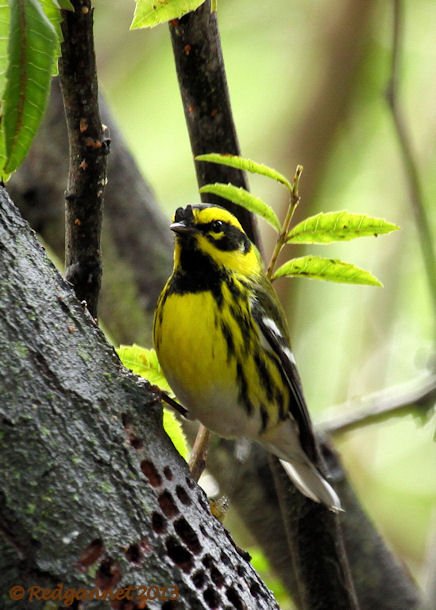
I have been searching through the internet this evening trying to find support for some behaviour that I witnessed at Fort Mason, San Francisco, this week. A Townsend’s Warbler was seen returning to a Red-breasted Sapsuckers’s sap well and appeared to be feeding from it. I didn’t imagine that I was watching a unique occurence, but tried to get some pictures just the same. It prompted a lot of questions, many of which I had previously answered by simple supposition and presumption, but which now became highlighted as inadequate in the light of this experience. How many well sites does a sapsucker maintain? How often does he do the rounds? Does he vigorously defend his food source? Do warblers regularly visit sap wells? In trying to find further evidence of the warbler’s behaviour and the sapsucker’s lifestyle, I found numerous mentions of Rufous Hummingbirds and “other species” coming to feed from sap wells. Our very own Larry Jordan weighed in with Anna’s Hummingbird in a Birder’s Report post and another mentions a Ruby-throated Hummingbird at a Yellow-bellied Sapsucker well. It seemed as though “other species” referred mostly to species of hummingbirds until I came across some reports from a Listserv in Maryland of an exceptional TOWA, that was reported to be feeding from sapsucker wells. The reporter also mentioned that she had made similar observations in Colorado, but my searches failed to unearth a specific report to substantiate the behaviour. I put out some feelers into the community rather than simply relying on my sketchy internet searching skills and received some replies suggesting that it is not unusual to see “other species” feeding at sapsucker wells. Warblers, orioles, kinglets and gnatcatchers have all been seen as have small mammals such as Pine Martins, bats and Red Squirrels but seldom, it seems, is the behaviour documented. Thus I bring you, the story of the Red-breasted Sapsucker and the Townsend’s Warbler.
The sapsucker was seen first. It was at the bottom of some steps leading from the gun placements at Fort Mason in San Francisco. The trees around were dotted with grids of sap wells.
(My first internet search was an attempt to sex the bird. Sibley suggests that the white line passing beneath the eye and onto the cheek indicates a female,but very few other authorities are prepared to be so bold and prefer to dodge the issue. In the absence of any other advice, I shall refer to our guy as a gal)
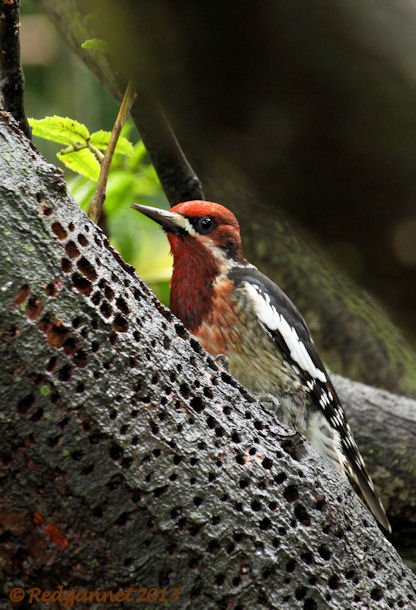
She flew down and probed around on top of the branch, with her head just out of view. I assumed that she was maintaining or licking sap from one of her fresh wells. She flew off after a short while and was almost immediately replaced by a male Townsend’s Warbler. He looked about for a moment, as if to check that the coast was clear, then bent down to the very same spot that the woodpecker had been tending. He spent some time there (perhaps two minutes), occasionally looking up then returning to his business.
Many of the sites that I visited in my quest for supporting evidence added that insects are also attracted to the sap wells and that sapsuckers will supplement their diet with this valuable protein source. On a cold day in the second week of February, there were very few insects seen and probably not enough to keep a hungry warbler interested (and more to the point, still) for two minutes at a time.
I noted also that the warbler’s forehead looked unusual. It was possibly caused by the stickiness of the sap that matted his tiny front feathers. This made the suggestion even stronger that he was feeding from the sap. He suddenly flew off, alerted to the incoming sapsucker which landed on another grid of wells in the next tree. She hadn’t made any sound that I could discern as she approached; the warbler’s radar must be more atuned than mine.
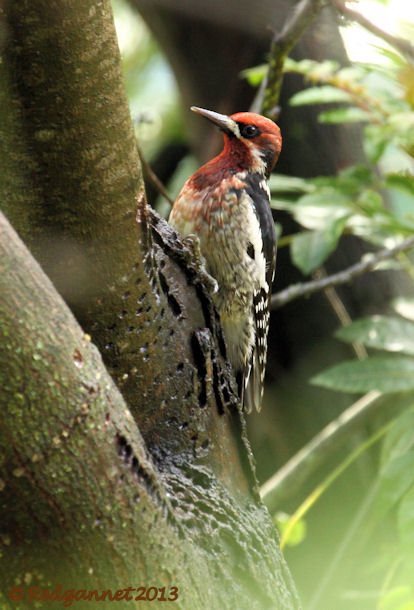
The sequence was repeated, but on the second occasion. the sapsucker caught the warbler in the act and flew straight in to chase the sap robber away. I changed to a position further up the slope which allowed me to get a better angle on the top of the branch and bear out my supposition. The fresh well is clearly visible below and fits with the position of the feeding warbler.
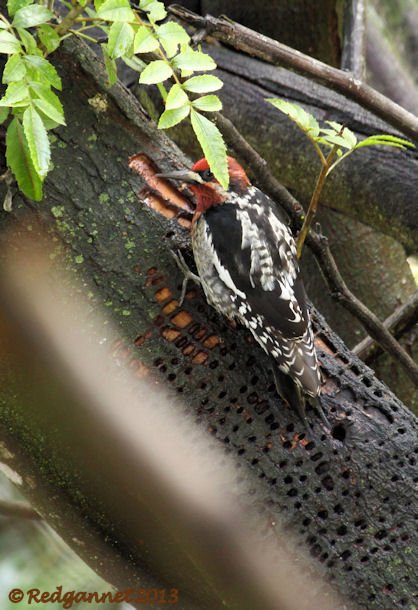
I watched the warbler return to the branch and feed from the sap well four times. When the sapsucker was present, it retreated out of sight, but on one occasion, I noticed it on another sap grid higher in the tree. I couldn’t say if this one was being maintained. The lower wells that were visible looked old and dry. the warbler was mostly hidden behind a fork and I could not see if he was feeding, or just staying out of the way until the sapsucker flew off again.
With the wealth of independent observations available from the internet, I was surprised to find so little about such interesting behaviour, but I learned much from my searching. Did you know that the collective term for sapsuckers is a “slurp”. And of course they do not slurp or suck, but lick the sap with their bristly tongues, making a case to re-name them “sap-lappers”. As so often happens though, I ended up with more questions than I started with. For example, how long does it take for a sapsucker to do the rounds of its sap wells? On this occasion, she returned to the featured branch four times in less than 20 minutes, but was she returning more frequently to this grid because she knew that the warbler was feeding there and wanted to protect her investment? For how long does a sap well produce sap before it dries up? Do sapsuckers favour different trees at different seasons and do they continue to maintain sap wells in deciduous trees even when the tree is dormant? Does the size of the well differ as the seasons change (I noticed that she was maintaining and feeding from a long gouge. Was this to increase the productivity of the well in times of low sap pressure?)? Are the small pinprick wells springtime gushers?
In the interest of completeness, I should mention that many Yellow-rumped Warblers were seen on the same trip and they also had matted feathers on their foreheads. The birds that I observed were feeding on damp lawns beneath eucalyptus trees and may have become sticky with damp earth or resin.
Field guides can’t possibly include this sort of background information in a portable form and us out-of-towners can never hope to amass this depth of experience, so if you are a practiced sapsucker watcher please share your expertise and if you know of any examples of “other species” feeding at sapsucker wells, please get in touch.


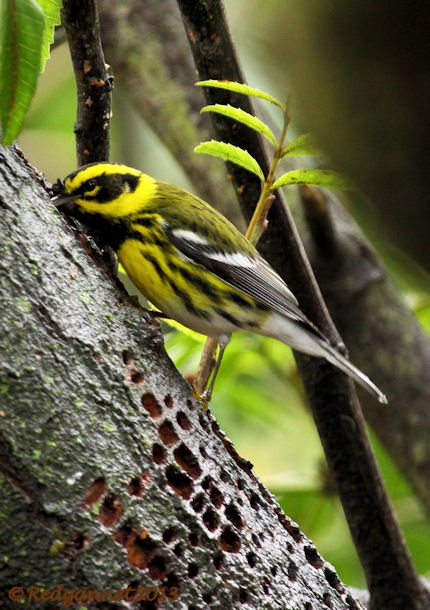
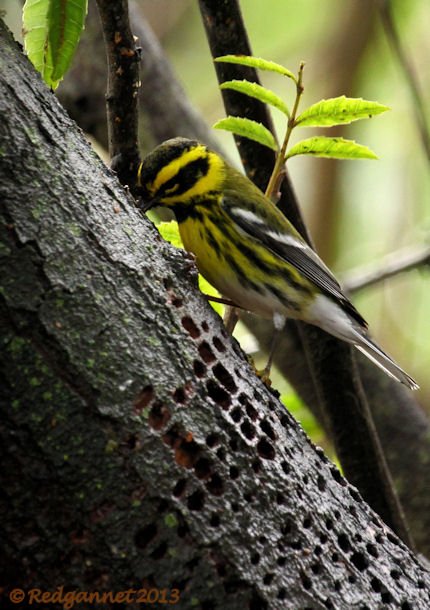

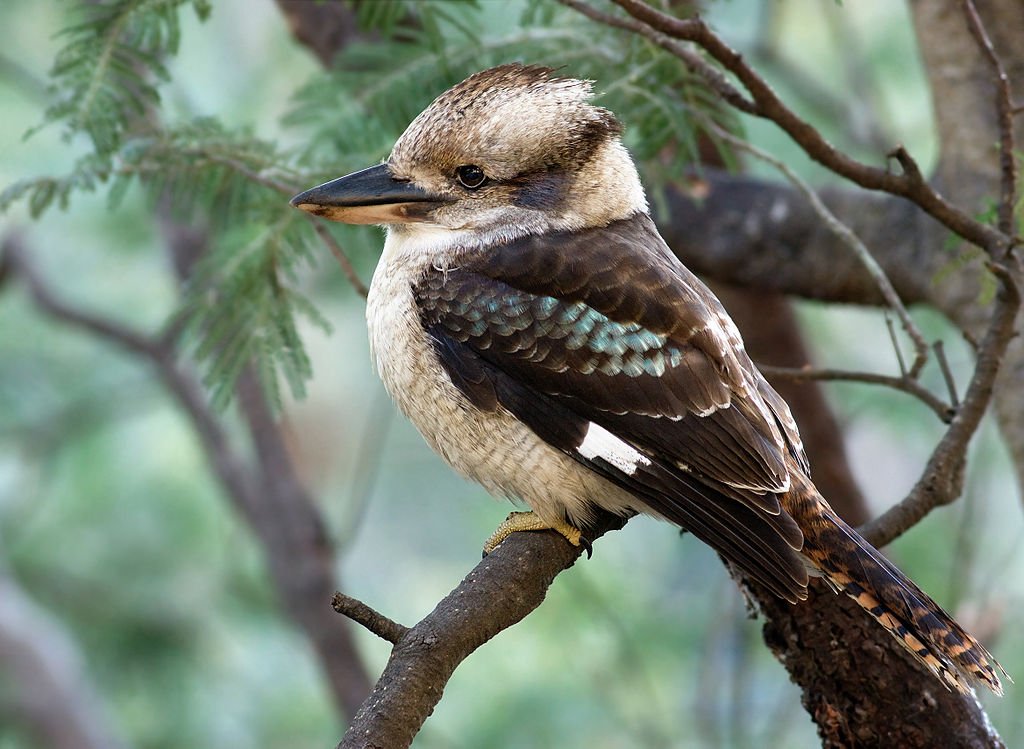
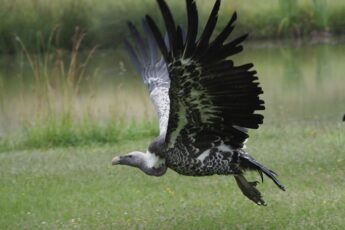

 New writers welcome – please contact us for details.
New writers welcome – please contact us for details.

















In California, songbirds that winter in areas of high Eucalyptus density frequently have gummed/matted feathers on their head, mostly warblers and kinglets which feed on the nectar-laden “flowers” of the trees.
I’ve seen a handful of non-hummingbirds feeding at sap wells…the coolest was a vagrant Black-throated Blue Warbler that essentially wintered at some sap wells a Red-breasted Sapsucker was maintaining.
I reckon a lot of sapsucker foraging behavior is dictated by what tree species they are using, the “quality” of sap those trees produce, energetic needs (i.e. birds wintering in cold climates may require more calories), etc.
I know this is almost 10 years later but i stumbled on this blog post while searching to confirm the identity of this black and yellow striped bird with the hamburgler type mask that i believe is some kind of warbler that visits my camellia tree every year around March. Its the last week of Feb so it’s close enough.
I don’t know much about warblers so I didn’t know if they were into nectar like hummingbirds are.
I also have chestnut backed chickadees that regularly visit and i think they cache some of the black oil sunflower seeds that I put out in the camellia flowers.
This warbler visits but never touches down on the feeder or the ground where i also sprinkle some seeds for the birds that like to ground forage. I see him jumping from flower to flower on the camellia tree. Ive been thinking that he is possibly stealing the Chickadees’ stashed seeds. That made me chuckle about why he wears the burgler mask. So either that or he eats insects in the flower or nectar or all of the above.
There’s never more than 1 that visits and i cant recall if I’ve ever noticed one accompanied by a female when theyve visited.
When I read this post about the warbler helping himself to another bird’s stash it further supported my theory that they are little food thieves.
I don’t hold that against them though. I think they are really beautiful and that makes them kind of interesting little characters too. I love their annual visits.
Thanks for posting this I’m going to browse the rest of your bird posts regardless how old they may be hehe.
Cheers!